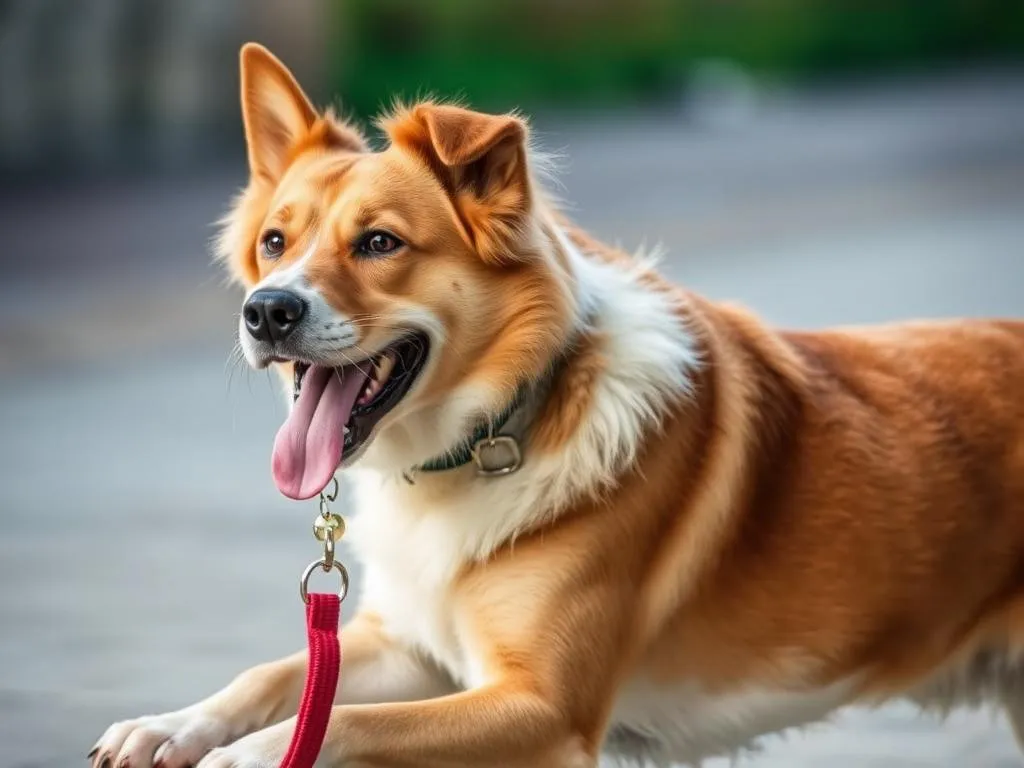
Introduction
Dog collar accidents are unfortunate incidents that can occur when a dog’s collar does not function as intended, leading to potential injuries or distress for your furry friend. These accidents can range from choking due to a collar being too tight, to skin irritations caused by poor material selection. Understanding the various types of collar accidents and how to prevent them is crucial for every dog owner.
Preventing accidents is not just about ensuring your dog looks good with a collar; it’s about their safety and well-being. Collar accidents can lead to severe injuries, anxiety, and in some cases, even death. The purpose of this article is to provide you with valuable insights into how to prevent dog collar accidents, ensuring your pet remains safe and happy.
Understanding Dog Collar Accidents
Common Types of Dog Collar Accidents
There are several common types of dog collar accidents that pet owners should be aware of:
-
Choking Incidents: Collars that are too tight can restrict a dog’s breathing, leading to choking. This often happens during playtime or when the dog pulls on the leash.
-
Skin Irritations and Injuries: Collars made from harsh materials can cause rashes or irritations on a dog’s neck over time. Additionally, collars that are too tight can lead to painful abrasions.
-
Collars Getting Caught on Objects: Dogs that are curious or adventurous may get their collars caught on fences, furniture, or other objects, which can lead to serious injuries.
Statistics and Data
Research indicates that incidents related to dog collars are more common than many pet owners realize. Studies show that approximately 30% of dog owners have experienced a collar-related accident at some point. This statistic highlights the importance of being proactive about collar safety.
Choosing the Right Collar
Types of Dog Collars
Selecting the right collar is the first step in preventing accidents. Here are the most common types of collars:
-
Flat Collars: The most traditional type, suitable for everyday wear. However, they may not be ideal for dogs that pull.
-
Martingale Collars: Designed to tighten slightly when the dog pulls, preventing escape while avoiding choking.
-
Head Collars: These provide better control for dogs that tend to pull, directing their head and body in the desired direction.
-
Harnesses vs. Collars: While collars are generally used for ID tags and leash attachment, harnesses distribute pressure more evenly across the dog’s body, making them a safer option for walking.
Factors to Consider When Choosing a Collar
When selecting a collar, consider the following factors:
-
Dog’s Size and Breed: Different breeds require different collar types and sizes. Ensure the collar is appropriate for your dog’s neck size.
-
Activity Level: Highly energetic dogs may benefit from a more secure collar or harness that prevents slipping.
-
Material and Design Considerations: Opt for collars made from durable, breathable materials to avoid skin irritation.
-
Safety Features: Look for breakaway collars that release when tugged hard, and reflective materials for visibility during nighttime walks.
Proper Fitting of Dog Collars
How to Measure Your Dog for a Collar
Ensuring a proper fit is crucial for preventing dog collar accidents. Here’s how to measure your dog for a collar:
- Use a flexible measuring tape.
- Measure around your dog’s neck, ensuring the tape is snug but not tight.
- Add two fingers’ width between the collar and the neck to ensure comfort.
Signs of an Improper Fit
Understanding the signs of an improper fit can help prevent accidents:
-
Too Tight Signs: If your dog shows signs of choking, difficulty breathing, or persistent scratching at the collar area, it may be too tight.
-
Too Loose Signs: If the collar slips off easily or can be pulled over your dog’s head, it is too loose and poses a risk of getting caught on objects.
Adjusting the Collar
Adjusting the collar properly is essential. Follow these tips for safe adjustment:
- Regularly check the fit, especially as your dog grows or changes weight.
- Ensure the collar is snug but allows for two fingers to fit comfortably underneath.
Regular Maintenance and Inspection
Importance of Regularly Checking the Collar
Routine inspections of your dog’s collar can prevent accidents. Look for:
- Wear and Tear Signs: Check for fraying, cracking, or any signs of damage that could lead to failure.
Cleaning and Care Tips
Keeping collars clean is vital for your dog’s health. Here are some best practices:
- Wash fabric collars regularly in warm, soapy water.
- Rinse thoroughly and allow to air dry to prevent mold and odor.
- For leather collars, use a damp cloth and leather conditioner to maintain suppleness.
When to Replace a Collar
Know when it’s time for a new collar. Indicators include:
- Significant wear and tear.
- If the collar no longer fits properly due to weight changes.
- Any signs of irritation on your dog’s neck, indicating it may be time for a different collar.
Training Your Dog with Safety in Mind
Basic Commands for Safety
Training your dog to respond to basic commands can significantly enhance their safety during walks. Commands like “sit,” “stay,” and “come” ensure better control when on a leash.
Leash Training Techniques
Using collars and leashes together safely is essential. Here are some best practices:
- Use a strong leash that attaches securely to the collar.
- Practice short walks to train your dog to walk calmly beside you.
- Avoid using retractable leashes, as they can lead to sudden pulls and unexpected accidents.
Socialization Tips
Encouraging safe interactions with other pets and people is crucial. Here are some tips:
- Gradually introduce your dog to new environments and other animals.
- Always supervise playtime with other dogs, especially in public spaces.
Alternative Solutions to Traditional Collars
Exploring Dog Harnesses
Harnesses can offer a safer alternative to collars, especially for dogs that tend to pull. They distribute pressure evenly across the chest and back, reducing the risk of neck injuries.
Breakaway Collars
Breakaway collars are designed to release under pressure, providing an additional layer of safety. They are particularly useful for dogs that may get caught on objects during play.
Technology-Enhanced Options
Smart collars with GPS and safety features can also help prevent accidents. These collars allow you to track your dog’s location, ensuring they are safe and secure at all times.
Emergency Preparedness
What to Do in Case of an Accident
If an accident occurs, acting swiftly can make a significant difference. Here’s what to do:
- Remain calm to avoid further stressing your dog.
- If the collar is too tight, carefully loosen it if possible.
- Seek veterinary assistance immediately if your dog shows signs of distress.
First Aid Tips for Collar-Related Injuries
Basic first aid knowledge can be invaluable for dog owners. Here are some tips for common injuries:
- For choking, ensure your dog is calm and try to dislodge the object gently.
- For skin irritations, clean the area with mild soap and water and monitor for infection.
Creating an Emergency Plan
Having a plan in place can help you respond effectively to emergencies. Consider keeping a first aid kit specifically for your dog, and familiarize yourself with the nearest veterinary clinics.
Conclusion
Preventing dog collar accidents is a vital responsibility for any pet owner. By understanding the types of accidents that can occur, choosing the right collar, ensuring proper fit, and maintaining regular inspections, you can significantly reduce the risk of incidents. Additionally, training your dog with safety in mind and considering alternative solutions like harnesses can further protect your pet.
It’s crucial to take action now to assess and improve your dog’s collar safety. Remember, the right precautions can make all the difference in ensuring your furry friend remains safe and happy.








